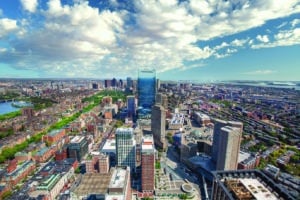After a year of disruption to office occupancy, tenants have more leverage to negotiate deals with landlords in Boston and other cities with gluts of sublease space.
During 2020, companies signed 480,000 square feet of sublease space in downtown Boston, representing 25 percent of all leasing volume, according to a report by Newmark. Boston ranked third nationwide in subleases as a percentage of overall leasing volume, trailing only San Francisco and Manhattan.
The trend accelerated in the second half of the year, with office subleases comprising over 37 percent in the Boston central business district and a majority of all leases in the first two months of 2021.
“For tenants, the balance of power has shifted in their favor. Limited office demand and leasing activity, coupled with rising sublease availability, have given tenants in some gateway markets like San Francisco and Boston more bargaining power than they’ve had in years,” said the report by Newmark Director of Research Liz Berthelette.
Tech-centered coastal cities have seen greater spikes in sublease offerings than other markets, according to Newmark research. Nationally, just 3.1 percent of the overall office inventory is available for sublease. By contrast, downtown Boston and Cambridge’s office markets have 6.8 percent of their office inventory available for sublease, of 5.2 million square feet.
This month, beverage delivery app Drizly opted for a sublease at 501 Boylston St. for expansion, taking nearly 31,000 square feet offered by Aquent.
The report cites the availability of shorter terms, small upfront capital costs and better overall economics as favoring sublease deals. The effects on future office rents remain uncertain as companies continue to evaluate their space needs and work arrangements in the post-pandemic environment.
“Persistently high vacancies, driven largely by subleases, are weighing down effective rents due to expanded concession packages,” the report said.









